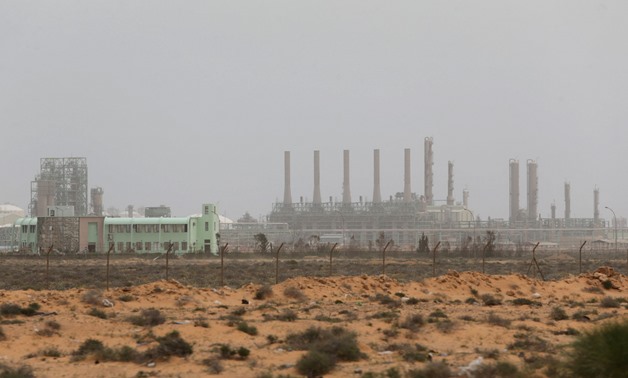
FILE PHOTO: A view shows Ras Lanuf Oil and Gas Company in Ras Lanuf, Libya, March 16, 2017. REUTERS/Esam Omran Al-Fetori/File Photo
SINGAPORE - 28 June 2018: U.S. oil prices dropped away from three-and-a-half year highs on Thursday amid high output from Russia, the United States and Saudi Arabia, although unplanned supply disruptions elsewhere and record demand stemmed a bigger decline.
U.S. West Texas Intermediate (WTI) crude futures CLc1 were at $72.42 a barrel at 0639 GMT, down 34 cents, or 0.5 percent, from their last settlement. WTI hit its highest since November 2014 at $73.06 per barrel in the previous session.
Brent crude futures LCOc1 were at $77.40 per barrel, down 22 cents, or 0.3 percent, from their last close.
Oil prices have been rallying for much of 2018 on tightening market conditions due to record demand and voluntary supply cuts led by the Middle East dominated producer cartel of the Organization of the Petroleum Exporting Countries (OPEC).
Unplanned supply disruptions from Canada to Libya and Venezuela have added to those cuts.
Yet not all indicators point toward an ever-tightening market.
Although output growth is slowing, U.S. crude production C-OUT-T-EIA is approaching 11 million barrels per day (bpd).
With Russia and Saudi Arabia at similar levels, and output expected to rise as OPEC and Russia ease their supply restrictions, there will soon be three countries pumping out 11 million barrels of crude each and every day.
This unprecedented output means just three countries are meeting a third of world consumption.
Despite this, analysts warn that the market has little spare capacity to deal with further disruptions.
“With inventories still declining and spare capacity uncomfortably low, there is very little cushion for any supply disruption caused by rising geopolitical risks,” ANZ bank said in a report published on Thursday.
Despite rising U.S. output, U.S. commercial crude oil inventories C-STK-T-EIA dropped by almost 10 million barrels in the week to June 22, to 416.64 million barrels, according to the Energy Information Administration on Wednesday.
Traders expect inventories to draw further in coming weeks as an outage of Canada’s Syncrude locks in over 300,000 bpd of production. The outage is expected to last at least through July, according to operator Suncot (SU.TO).
The stock draw was also due to high exports of almost 3 million bpd, coupled with domestic refinery activity hitting a utilization rate of 97.5 percent, the highest in at least a decade.
Oil demand has been chasing records for most of 2018, but the outlook is dimming amid escalating trade disputes between the United States and other major economies including China and the European Union.
“Our macroeconomic view remains overwhelmingly bearish,” commodity brokerage Marex Spectron said.

Comments
Leave a Comment